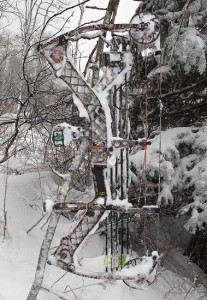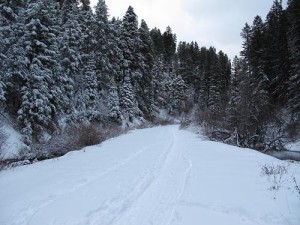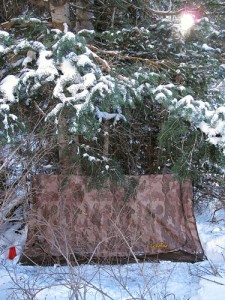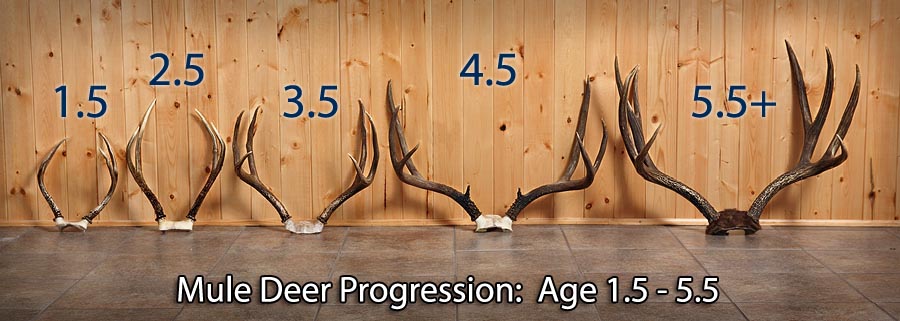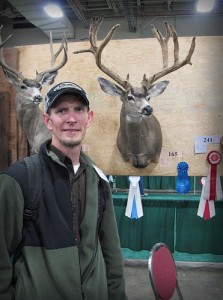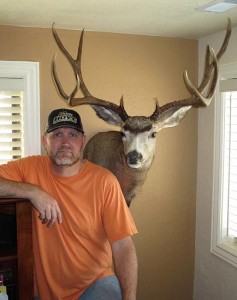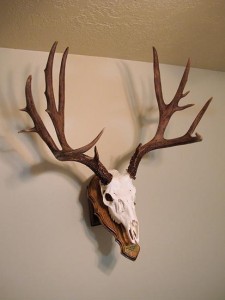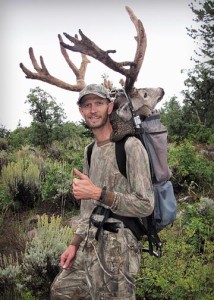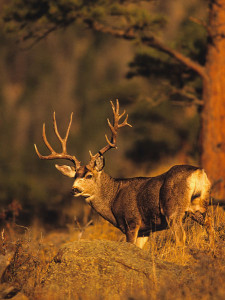Surviving Cold Weather Hunting
The arctic weather lately reminds me of a couple days I spent on the Wasatch extended hunt last November. This particular trip corresponded with the two coldest days of the month. Nighttime temps reached zero degrees just outside the thin walls of my little two-man tent. I was also four miles from civilization and alone.
Although I’d spent some cold nights afield before this trip, I had some serious challenges this time.
To save on weight I only brought enough food for two or three nights, which included three boiled eggs. Before I got to my secret camp tree, the eggs were frozen solid, cracked, and inedible. On my way to camp I filtered a bunch water, and afterwards my water filter froze up and became inoperable. I fought the whole time to keep my water jugs from freezing solid inside the tent. My half-full fuel canister surprisingly froze and stopped working, so I couldn’t eat my freeze-dried meals until I thaw it out. My little bottle of scent spray froze solid, and my bow also froze after getting snowed into camp.
To keep from freezing to death, I slept in my down coat and stuffed several hand warmers into my sleeping bag. Within two days I’d eaten all my food just to stay warm and had to cut the trip short. As if that wasn’t bad enough, I didn’t find any deer either.
Problems and Fixes
The problem with freezing temps is the sheer energy needed to survive, which leaves less energy to hunt. Believe me, morale was low on this trip. Below I’ve listed several cold weather challenges and possible fixes:
- Wet Feet: Once your feet get wet, your body temperature will plummet. Even the best waterproof boots eventually become saturated when hunting in snow. The Fix: Change your socks and insoles often. Wear only thick wool socks since wool retains heat when wet. Also, I waterproof sprays (such as CampKote or Scotch Guard) will give provide a little extra time before your boots get wet in snowy conditions.
- Fuel Canister Freezing: On this trip I packed a half-empty fuel canister in order to stay light. A half-empty can will freeze and lose its pressure. The Fix: Bring a full can and/or stick it in your armpit for five minutes every morning and night to warm it up. This can be very uncomfortable, but at least you can cook.
- Water Filter Freezing: Your water filter will freeze and be very difficult to thaw. The Fix: Bring extra water bottles and filter as much water as you can in the beginning. You can also keep the filter in your tent if it’s warm enough, or in your day pack if there’s room.
- Frozen Water Jugs: The only thing more dangerous than being cold is being cold and dehydrated. The Fix: Three methods I used: Each time you see ice forming in your jugs, boil a third of the water and dump it back in the jug, sleep with the water close to your body, and keep your pack water against your back at night.
- Frozen Food: The Fix: Easy; don’t bring any food that can freeze. Also, bring lots of extra food, especially carbs! You’ll always burn more energy when your’e cold.
- Freezing Hands: Like boots and other clothing, gloves eventually become saturated when snow hunting. Once your hands freeze, you’re done; good luck drawing and shooting your bow! The Fix: Wear nitrile gloves under your hunting gloves. I always carry Nitrile (rubber) gloves anyway, and out of necessity I found they work wonders to keep your hands warm. Even if your hunting gloves become saturated, the nitriles provide a barrier between your hands and moisture. It makes a huge difference.
- Frozen Bow: Because my bow doesn’t fit in my bivvy tent, I left it in the snow outside which formed ice around the cams. It took a long time to thaw it out using my breath and hands. The Fix: Either keep your bow in the tent or cover it in a bag or hang it in a pine tree.
- Night-time Warmth: My sleeping bag is rated for zero degrees which did little to keep me warm. The Fix: I slept with a down coat on, two pairs of thermal bottoms, and two pairs of wool socks. It’s all about layering. I also stuffed several hand warmers into my sleeping bag.
- Hypothermia: When hunting alone in arctic conditions you must always be prepared for the worst. The Fix: The key to staying warm, especially when sitting ambush, is layering. And not just any old layers, but down layers (e.g. feathers). My main coat is all down. But at 0-degrees it’s sometimes not enough. So what to do? MORE down layers. I always carry an extra sleeveless down jacket in my pack. Rarely do I actually need it, but when things get rough, or wet, or get God-forbid an emergency arises, that extra down jacket will save your life. Double-down; that’s the secret; don’t forget.
Auxiliary Heat Source
Hand and body warmers are a life saver! Incidentally I only use the Hot Hands brand. They last longer and are way hotter than other brands. Just a word of caution: keep them away from bare skin. My feet got so cold in the night that I stuffed a hand warmer down each sock. I woke up in the middle of the night with painful burns on the tops of my feet. Otherwise they worked great.
When sleeping or sitting still for long periods of time, an external heat source is often necessary, and body warmers work great. The best type is the sticky body warmers. Just peel and stick anywhere. They are most effective near your core and main arteries. The best place is halfway between your armpit and heart (left side of the body).
Conclusion
The cold takes a lot out of you, both physically and mentally. It’s a lot easier to throw in the towel when you’re forced to spend so much energy just to survive. But you have to ask yourself, where else would you rather be? The cold is just part of the extended hunt experience. Either you’re up to the challenge or you’re just a fair-weather hunter. Decide what your goal is and stick to it. A little cold weather is nowhere near as miserable as eating an unused tag!
Although the freezing temps and starvation forced me off the mountain early, I returned a week later. And even though I got snowed in pretty good, I really loved being back in my little mountain home. Survival and success in arctic conditions really comes down to preparedness and mental toughness. If you’re prepared for the cold then there’s nothing to worry about except bagging a giant buck.


